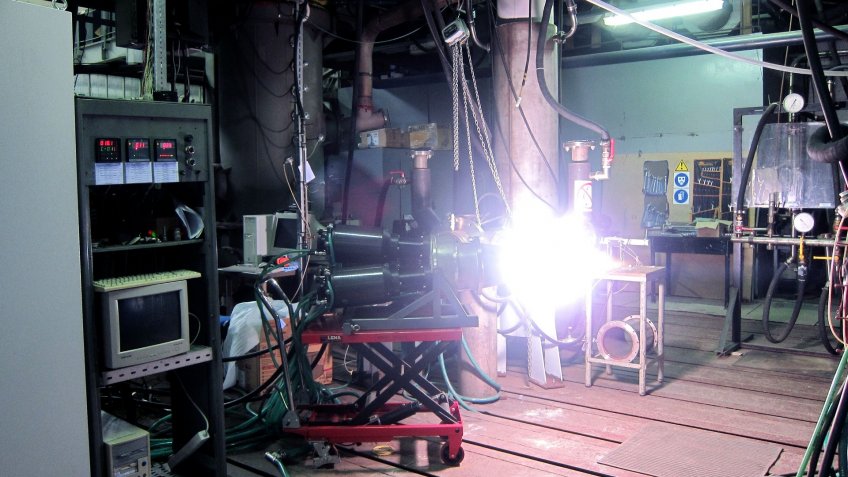A research group from
Saint Petersburg Mining University has conducted a series of successful experiments to produce corundum with a purity of over 99.999% using innovative plasma technology. With low-temperature plasma used for melting alumina in the reactor, contamination of the final product by electrode materials can be avoided, thereby ensuring its high quality.
Following the results achieved in this work, Mining University obtained a patent for a plasma furnace with multi-layer refractory lining. The invention helps improve the heat-balance control of the plasma furnace whilst enhancing the chemical purity of the corundum produced. To carry out the experiments, the researchers used a plasma torch of the Institute for Electrophysics and Electric Power of the Russian Academy of Sciences.
The development of plasma nanotechnologies and new materials for the minerals sector is one of the promising areas of scientific work at the University. Amongst the most significant completed projects are the plasma technologies of manufacturing aluminium for metallurgy and hydrogen energy and the technologies of producing ultra-pure white corundum and sapphire glass.
The relevance of the work done comes from the fact that the current technologies of manufacturing corundum have been in use since the mid-20th century. By now, they have reached their maximum capacity, and a further increase in output within the traditional technology would cause a problem of growing energy intensity and power consumption. Yet, it would not ensure the required purity, hardness, and thermal stability of the final product.
The proposed technology involving the innovative plasma furnace to melt alumina opens up good prospects for industrial use. Victoria Kison, a PhD student in the Department of General and Technical Physics, is writing her thesis based on the empirical data from the experiments. Doctor of Physico-Mathematical Sciences Alexander Mustafaev, head of the department, supervises her work.
Synthetic corundum has numerous uses in a variety of industries. For white corundum, these include sandblasting, treating of hardened and tempered steels; it also serves as refractory and abrasives. Transparent corundum – leucosapphire – is used to make substrates for microchips, in optical devices, lasers, and for the manufacture of ultra-thin medical scalpels. The value of corundum is due to its hardness, which is 9 out of 10 on the Mohs scale. Diamond has the highest value of hardness. Corundum can also be used as a material for producing aluminium by electrolysis.
